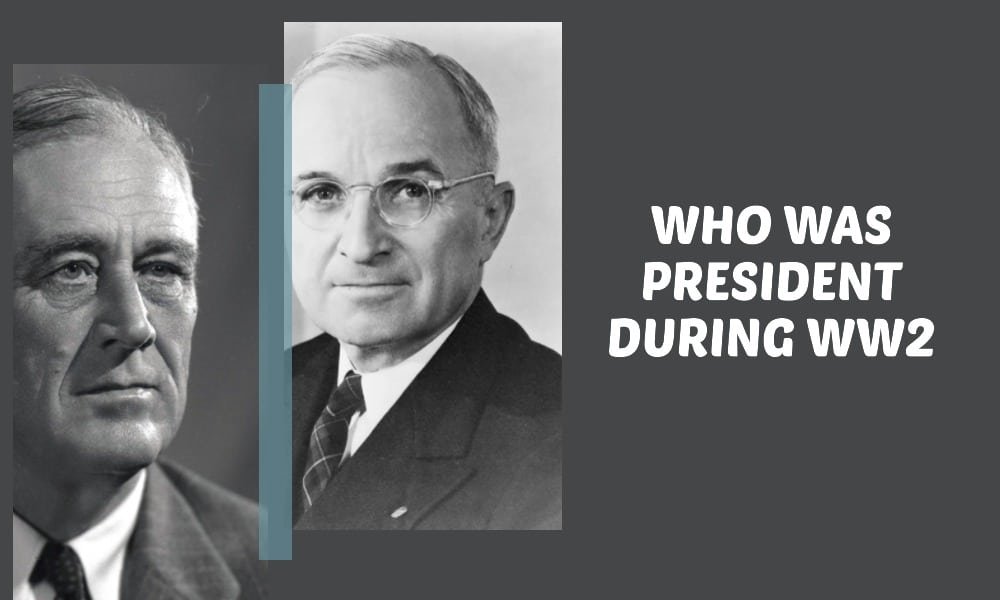Introduction
World War II, a pivotal moment in history, saw profound global changes and remarkable leadership. This blog post focuses on the question: “Who was president during World War II?” We’ll explore the presidencies during this era, their impact on the war, and their lasting influence on world affairs.
The Presidents of World War II
Franklin D. Roosevelt: Steering America Through War
Early Years in Office
Franklin D. Roosevelt, often referred to as FDR, was the 32nd President of the United States. His presidency began in 1933, a time when the world was grappling with the Great Depression. Roosevelt’s initial focus was on domestic recovery through his New Deal policies.
Entry into World War II
The trajectory of Roosevelt’s presidency took a dramatic turn with the outbreak of World War II in 1939. Although initially maintaining a stance of neutrality, the attack on Pearl Harbor on December 7, 1941, compelled the U.S. to enter the war. Roosevelt’s leadership during this period was crucial. He mobilized the nation’s industrial and military resources for the war effort, leading to significant advancements in technology and production.
Key Policies and Decisions
- The Lend-Lease Act: Aiding Allies before active engagement in the war.
- Executive Order 9066: Controversially authorizing Japanese-American internment.
- The Manhattan Project: Initiating the development of the atomic bomb.
Health Challenges and Death
Roosevelt’s health was a growing concern throughout his presidency. In April 1945, just months before the war ended, Roosevelt died of a cerebral hemorrhage. His death marked a significant moment in both American and world history, bringing an end to one of the most influential presidencies of the 20th century.
Harry S. Truman: Concluding the War
Sudden Ascension to Presidency
Vice President Harry S. Truman succeeded Roosevelt in April 1945. Truman, less known to the public at the time, was suddenly at the helm during one of the most critical periods of the 20th century.
Key Decisions and Actions
- The Atomic Bomb: Truman made the controversial decision to drop atomic bombs on Hiroshima and Nagasaki in August 1945, leading to Japan’s surrender and the end of World War II.
- The Potsdam Conference: Truman participated in this meeting with Allied leaders to discuss post-war order and peace treaties.
Post-War Leadership
Truman’s presidency marked the beginning of the Cold War era. He established the Truman Doctrine and the Marshall Plan, significantly influencing the post-war reconstruction and the U.S.’s role in global politics.
Impact and Legacy
Roosevelt’s Legacy
- The New Deal: Revolutionizing U.S. economic policy and social welfare.
- World War II Leadership: His decisions shaped the war’s outcome and post-war world.
- The United Nations: Roosevelt’s vision led to the creation of the U.N., promoting global peace and cooperation.
Truman’s Legacy
- Ending the War: His decisions hastened the conclusion of World War II.
- The Marshall Plan: Vital in the reconstruction of Europe.
- Setting the Stage for the Cold War: Policies that defined U.S. foreign policy for decades.
Conclusion
The presidencies of Franklin D. Roosevelt and Harry S. Truman during World War II were times of extraordinary challenge and change. Their decisions not only shaped the course of the war but also the future of international relations and domestic policy in the United States.
FAQs
Q: How long was Roosevelt President during World War II?
A: Roosevelt was president from 1933 until his death in 1945, covering the entire U.S. involvement in World War II.
Q: What were Truman’s major contributions after World War II?
A: Truman’s major contributions included the Marshall Plan, the Truman Doctrine, and his role in establishing NATO.
Q: Did Roosevelt’s health affect his leadership during the war?
A: Roosevelt’s declining health was a concern, but he continued to lead effectively until his death in 1945.
Q: How did World War II impact U.S. domestic policy?
A: The war led to significant economic growth, technological advancements, and changes in social policies, including women’s role in the workforce and civil rights movements.
This comprehensive exploration of the U.S. presidency during World War II provides valuable insights into the leadership that guided America through one of its most challenging periods. The decisions and policies of Franklin D. Roosevelt and Harry S. Truman continue to influence the world today.







